Christmas of 1978 will always be a stand out memory for me. We’d moved to Tallahassee the previous summer, so it was the first holiday season in the new house. The focus of my annual “wishlist” was the Sears catalog. In today’s wired world, it’s a quaint memory to recall getting that thick catalog in each fall season, stuffed with photos of everything you could ever want for Christmas.
My mom had told me to fold down the pages of things I liked, and then circle the item I wanted. She was very careful to note that I wouldn’t get all of what I wished for, and I may get some things that I did not mark – just to keep it a surprise.
It became a bit of a guessing game with me. I didn’t want to appear greedy, but I also wanted cool stuff. Yet I knew that the budget had to be taken into account also, because apparently Santa sent invoices in the mail for all the toys, as a result of the gas crisis, which seemed to increase the cost of reindeer food or something. Or so my dad told me…
All I knew was that it made my job as the recipient of gifts a bit more difficult.
Location, Location, Location
The Sears catalog contained all manner of toys. For an eleven year old kid, it was almost overwhelming. However, unlike years past, the basic conditions that drove me to my Christmas morning selections had changed.
In our new house, I had a dedicated space to build my models. A small storage room ran along one side of our carport, and half of it had been allotted to me for model work. I sweated in the summer, and froze in the winter – but it was my space. I built models regardless of the conditions.
That dedicated space meant I could now take on big projects. Models far larger than any I had previously worked with. And as I looked through that catalog, I found exactly the kit I wanted.
Sending A Clear Message

Based on an archived image of the Sears 1978 Wishbook I found online, my choice was on page 492. There among all of the cool models was one of my favorite World War II aircraft, the B-17G.
Monogram had released it a few year prior in 1/48 scale. I’d seen it at a friends house, and though it was a bit intimidating in terms of size and parts count, I thought it was amazing looking. It was packed with detail.
It’s funny to think of now, but at the time, the price concerned me. It was… brace yourself… $7.97. Yes, seven dollars and ninety-seven cents. Looking back, I have trouble imagining why that would seem so great an expenditure. But I clearly recall feeling as though it was going out on a limb to even think of asking for so expensive a gift. So I did the unthinkable for a kid.
I marked that page, and that page alone. I boldly circled the picture, and the description on the opposite page. Carefully folding the corner of the page as my mom had shown me, creating a small bookmark that stood out, I handed the book back to her. She looked with raised eyebrow at the sole page corner standing up. Looking inside, she nodded. “We’ll see sweetie.”
Weathering The Bael
When I’d finished painting and panel lining the 1/100 Bandai Gundam Bael, I briefly considered calling it finished. I’ve been wanting to do a “clean” Gunpla for a while now, but just haven’t found one I thought worked. As I looked it over, the clean lines and sparse color touches brought a smile to my face.
Still, I’d been documenting this build as a Patreon video series, and the plan all along had been for the third and final installment to cover weathering. Realizing I’d need to forego clean until a later build, I began to plan my weathering strategy.
The way I look at it, weathering can do many things. The most obvious of course is… weathering. Making something look worn, dirty, old, and beat up.
But I think weathering can also be incorporated into what I think of as the “visual experience”. I try not to think of a model as just the work of reproducing something, Rather, I consider it as a piece that a viewer will see, and thus the weathering can tell a story – or at least suggest one.
Going even further into the “artistic” side of things, weathering can also be used to clarify detail. I decided that would be the main focus of the Bael’s weathering.
The Madness Behind The Method
Many mobile suits from the Gundam universe are white. While there may be other colors present in varying degrees, the principal suits are quite often white, or at least something close to it. The Bael is no exception. Apart from a few areas of blue, and small splashes of red and yellow (how is that for primary colors? 😉 ), it’s mostly a giant expanse of white.
Staring at white can be a bit difficult for our eyes. If you’ve ever been on a white, sandy beach for a while, or in the snow, you’ve experienced this. The human eye’s “white balance” is severely challenged, so much so that in extreme cases it can cause temporary blindness.
And while painting a model all white generally doesn’t have that result, at normal viewing distances, it can be difficult to discern detail. The more a viewer looks at it, the more “saturated” the eye becomes with white. This can quite often cause edges and detail to virtually disappear.
Getting Down To Business
With all of that in mind, my plan was that the weathering would be directed at defining edges and enhancing volume as a primary focus, and that weathering would simply be a secondary result.
I started with a quick dot filter application. Because white can be so easily influenced visually, I deliberately employed minimal color, using buff and gray oils. I stayed away from pure yellow, as it would be too stark. Applying the dots primarily on the larger open spaces of white, I dry blended them in with a wide, flay brush until just the least hint of tonal variation was suggested.
For the chipping, I used Vallejo Cold Gray on the blue areas, applied with a sponge. While I wanted to suggest chipping, of course, I tried to place the majority of the chips strategically along major lines and shapes. I felt this would help those areas stand out when viewed. In one area, I did go “off script” a bit on one of the blue panels on the wings, applying a very heavy “slash” of chips across it. I felt this would be a neat device to suggest some sort of previous action. Plus, it was a handy way of covering up where I broke that part in half. 😀 (That’s making the eathering work for you!)
Defining The Whiter Shade Of Pale
I chose Vallejo Neutral Gray for chipping the white. While I often use dark brown or even black, I thought those might be too stark. Plus, by using a lighter chipping color, if I went a bit overboard – which is a tendency I fight – later weathering would would minimize them by providing “distractions”, reducing (hopefully) the impact of the chipping.
As with the chipping on the blue, I used a sponge. Attention was given to areas where one white part had some separation distance from another. By chipping along the edge of the “higher” element, the volumes were enhanced a bit. This gives the viewers eye something to “grab”, and makes the shapes more visible.
On a few very sharp edges, I switched to a wide, flat brush, using just the edge to make a very definite line, but avoiding the extra “artifacts” a sponge can leave.
Do The Grime, Pay The Time
While I did not want this mobile suit to appear as a grunt suit in terms of dirt and grime, I did want to make sure I implied various areas of fluid and stain build up, while at the same time attempting to increase the presence of all the volumes around the mobile suit.
I decided to use oils for this, specifically Ammo’s Starship Filth Oilbrusher. When working with Bandi plastic, care must be taken to not allow oil/enamel thinner to run into joints and other areas where it might pool – and eat at the plastic.
The oils were applied with a small brush (not the one in the cap) along any edges or recesses where I wanted to add shadow and depth. A medium sized brush was then dipped in odorless thinner, and almost all of the thinner off loaded onto a paper towel. A simple way to test if you’ve done this is to wipe it on the back of your hand. You should see a very thin layer of moisture, with no pooling, and it should evaporate fairly quickly. If you’re not sure, it is better to go lighter than heavier.
With that barely damp brush, I then began to blend and work the oils until I achieved the look I wanted for the particular part. While the video demonstrates this quite well, it basically meant blending, wiping the brush, reloading with thinner, offloading, and repeating the process. The key is to not get hung up on “is this right?”, but rather “does this look like I want?” Oils are very flexible and forgiving, so experiment a bit to see how they work. It’s right when you’re brain says “that looks cool”. 🙂
Finishing Touches
Once all the grime was in place, I added a bit of exhaust staining using my airbrush to various vents and other “exits” on the model. My favorite mix of Tamiya NATO Black and Hull Red were again employed, with the usual mix of 2-1. Heavily thinned with alcohol, this can be misted on and built up quite convincingly.
A bare hint of Tamiya Deck Tan was applied with the airbrush, also heavily thinned, around the lower edges of the feet. This suggested some dust from standing on a planet surface, but not to the point of “tank dirty”. I wanted it to be virtually invisible at first glance, and only apparent upon closer inspection – even then being subtle.
Other final adjustments were made to all the previously applied effects, making sure it looked “all one part”. Paint chips adjusted, stains minimized or enhanced… whatever it took until my TLAR kicked in. (“That Looks About Right”)
I Wish They Were All Like This
That Christmas morning, I ran into our family room. As there were four children in our family, the tree presided over more than a few presents. Our family tradition was that wrapped presents were from each other, or extended family… but the unwrapped ones were the presents left behind by that Jolly Old Elf.
Sitting front and center, unwrapped and glowing with reflected Christmas tree lights, was the Monogram B-17G. I was excited beyond belief, flapping my arms like a gooney bird trying to take flight.
As I pawed through the box, I was truly in awe of the detail. I’d never seen its equal – to my young eye it seemed as if the real thing had simply been shrunk down.
In later weeks, as I built that magnificent kit, I often pondered “why can’t all kits be this way”?
Please Santa Bandai
While this 1/100 Full Frame Mechanics Gundam Bael kit is not the monumental moment that the Monogram B-17 was, it does have a close parallel to it. Having now built several of the Iron Blooded Orphan Gunpla kits in this scale, the question ran through my head “why can’t they all be like this?” Certainly every Bandai kit I’ve built has been top notch in quality. Yet as I ponder the various kits in this scale – Master Grade, RE/100, and No Grade – I come away wishing that Bandai would do more like this.
It has a full frame like a Master Grade kit, and loads of cast in detail. Yet it’s easy to build, as much of the detail is not separate parts. The build sequence is also ideal for painting and weathering. Build the full frame first, then add the armor. Finally, the external surface detail is very good, equal or even better than some of the Master Grade kits I’ve built. And while it has fewer gimmicks and weapons, the overall builds have been so fun that I completely overlook that.
In fact, the IBO designs are some of my least favorite – yet the fun they provide is to the point that I build them even if visually I find them a bit odd. If Bandai ever produces a GM or Zaku as a Full Frame Mechanics kit, I think I’ll faint. 😉
Give Them A Try
If you’re a Gunpla builder, and a 1/100 IBO kit has not crossed your desk, I highly recommend picking one out and building it. And for anyone who has not built a Bandai kit from the Mobile Suit Gundam universe, these kits are especially good “first time” models. The build sequence is a bit more traditional, and still gives a very good idea of what the genre is about.
This Gundam Bael is especially commendable. While I enjoyed the Barbatoss kits immensely, I really like the look of this version. Those wings on the back give a dramatic presentation to the viewer. And this kit’s color separation is commendable. All at a price that won’t break the bank.
For me, the best part is 1978 Jon is nodding in approval. This one is Wishbook worthy.
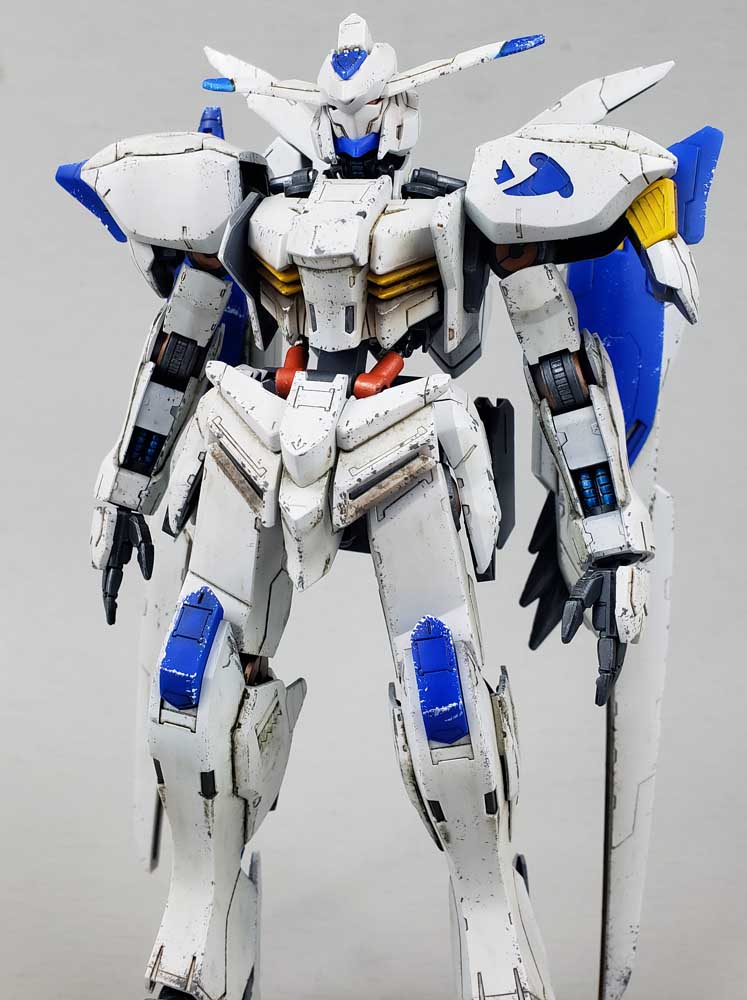

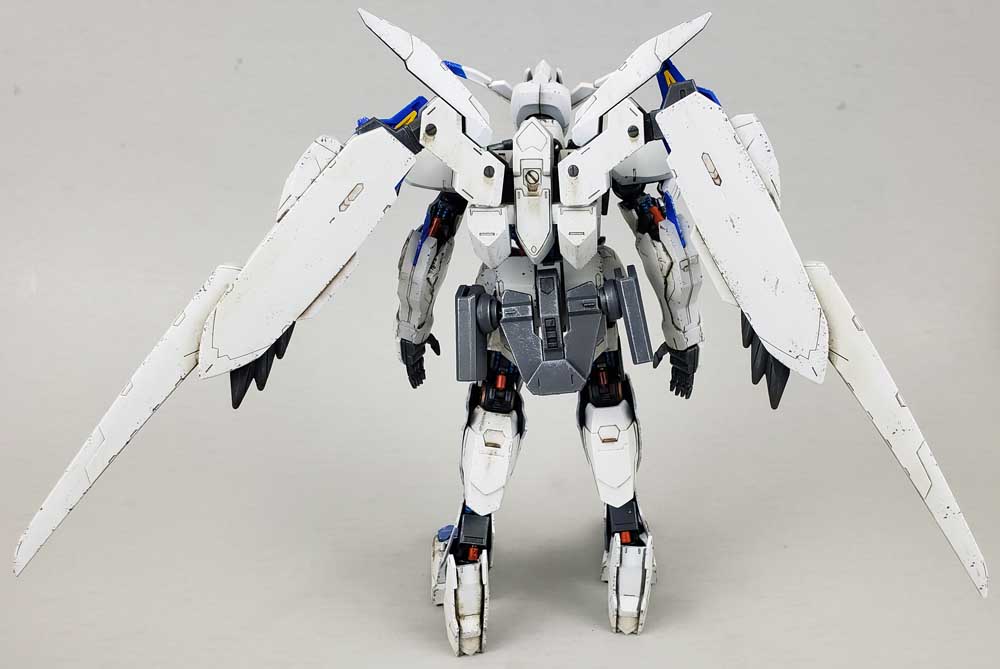

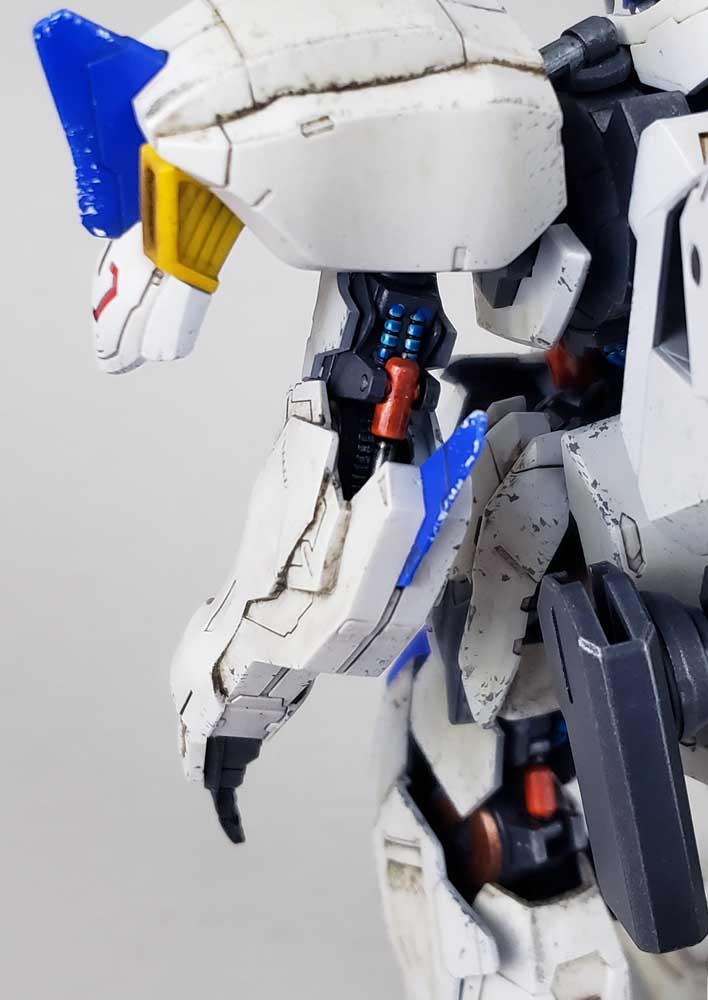

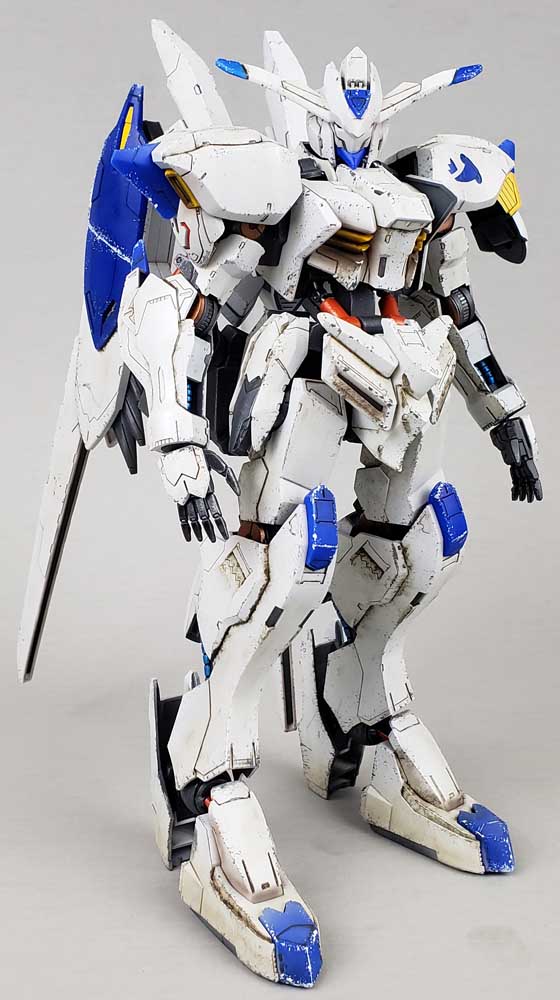
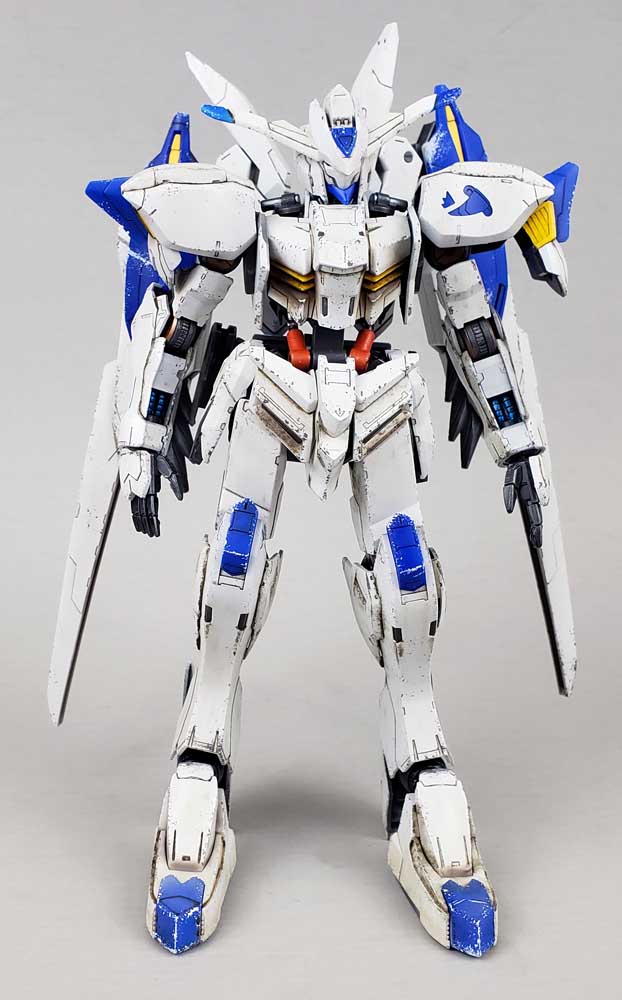
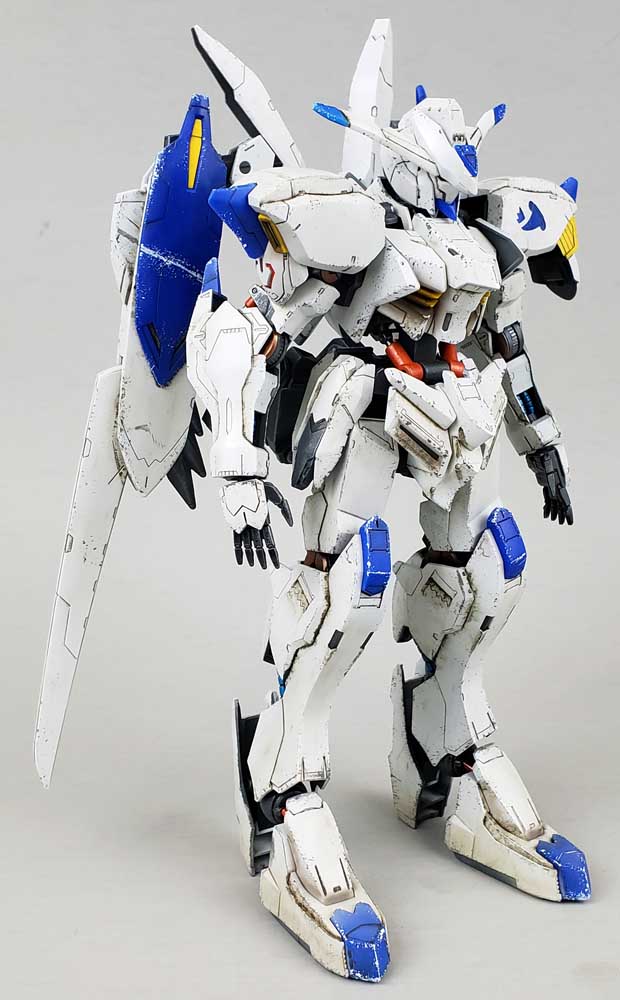


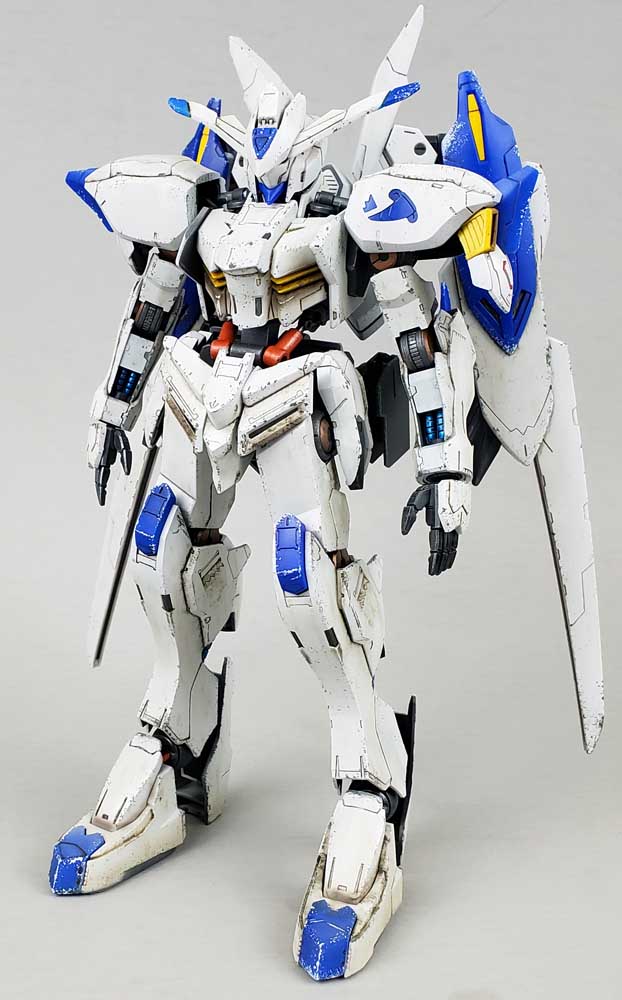
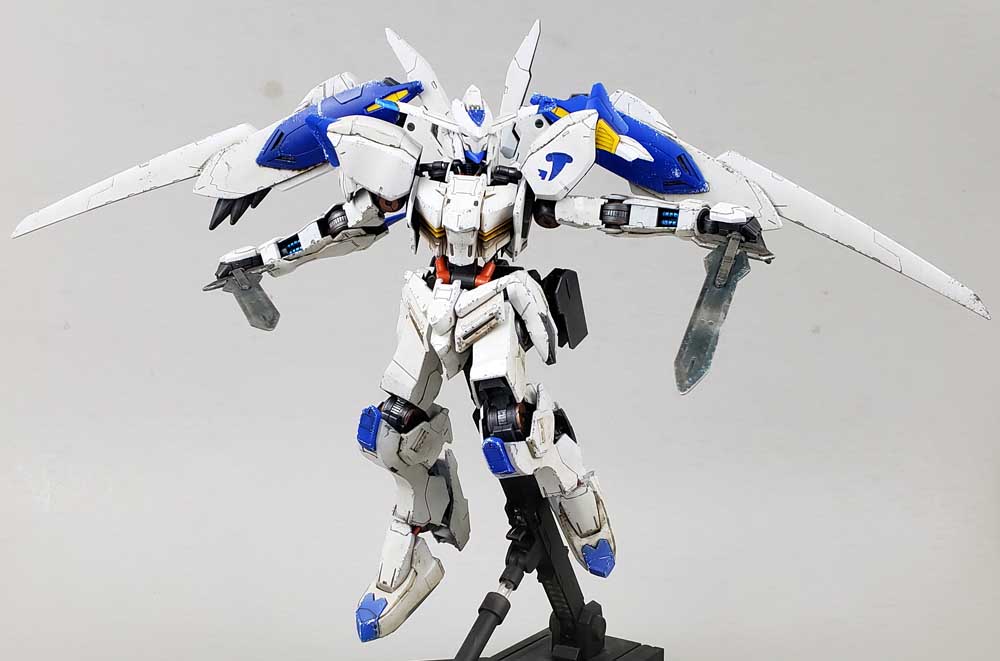
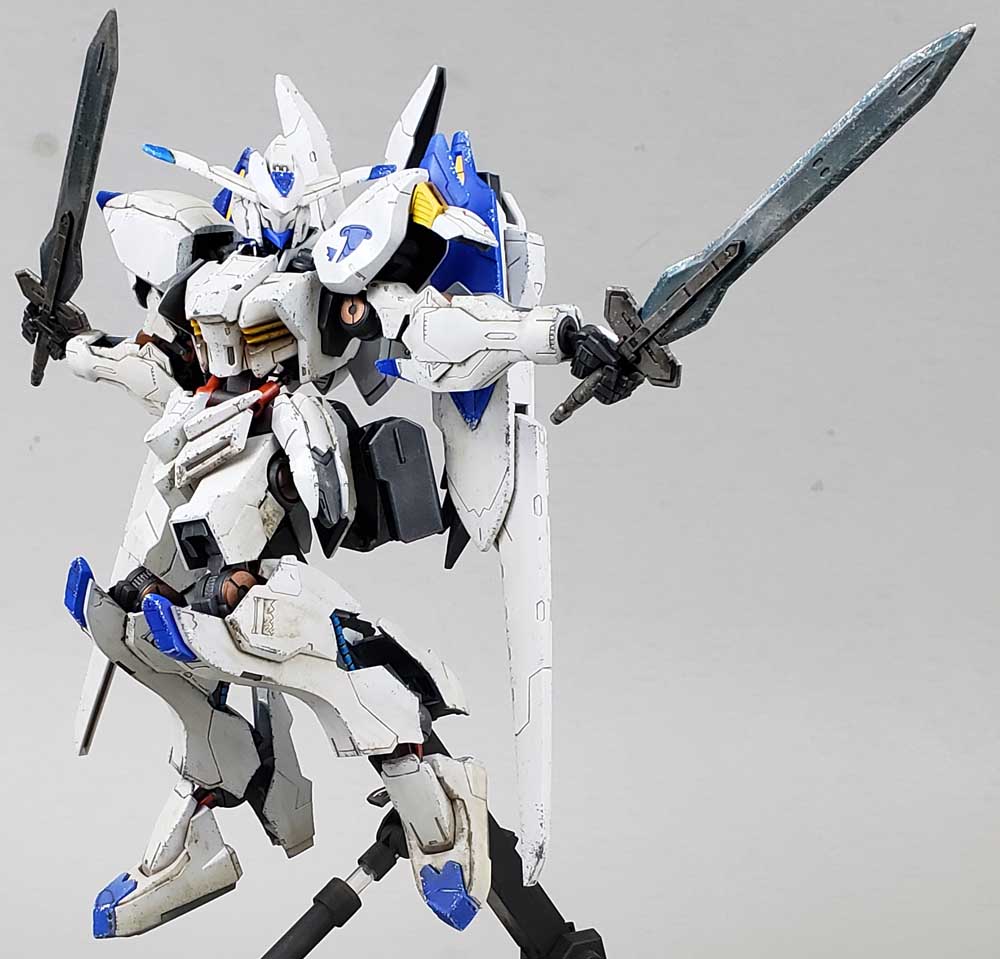

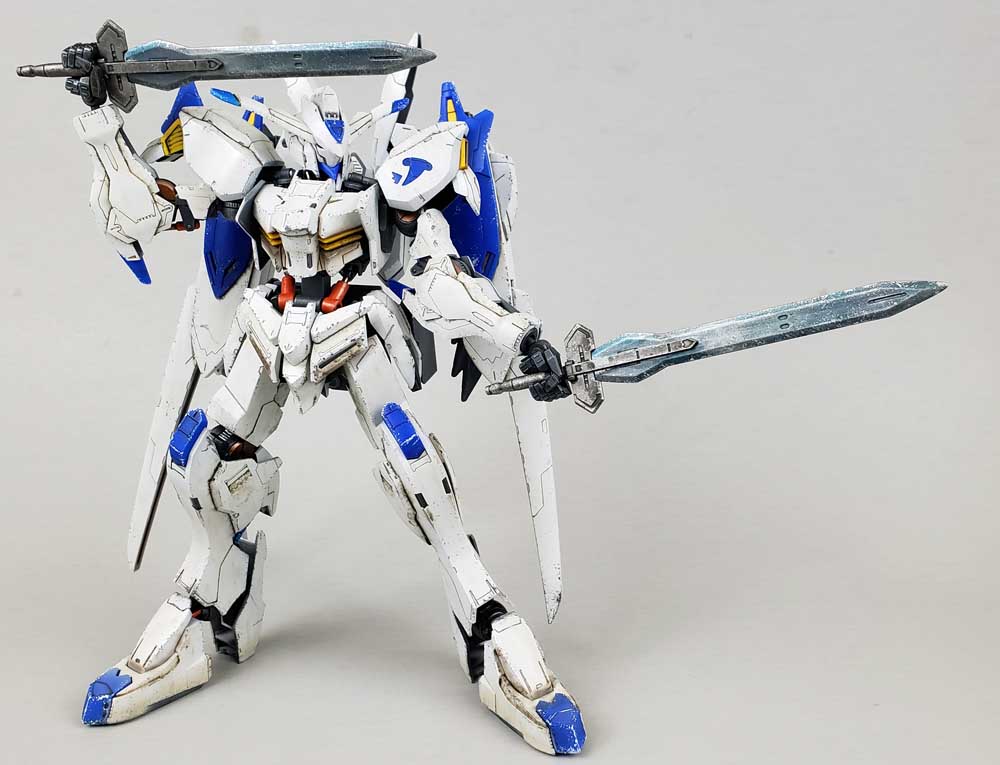



Leave a Reply